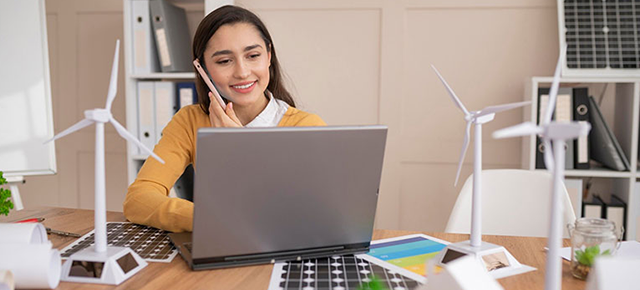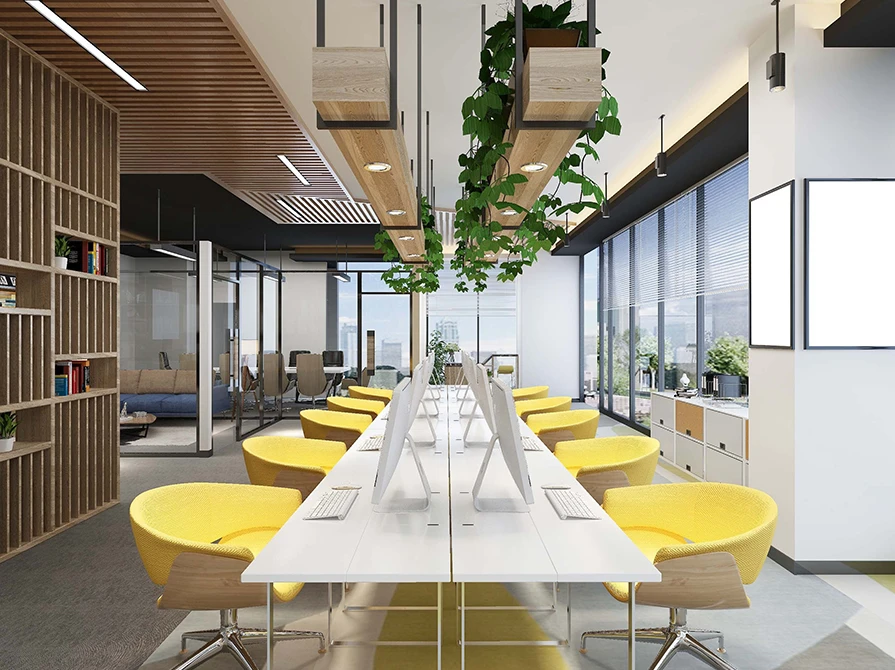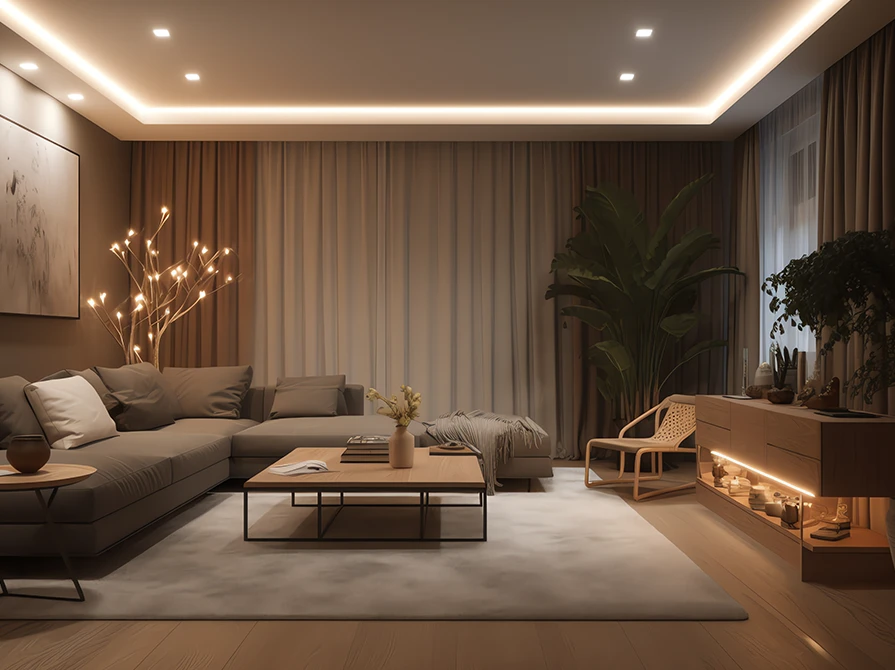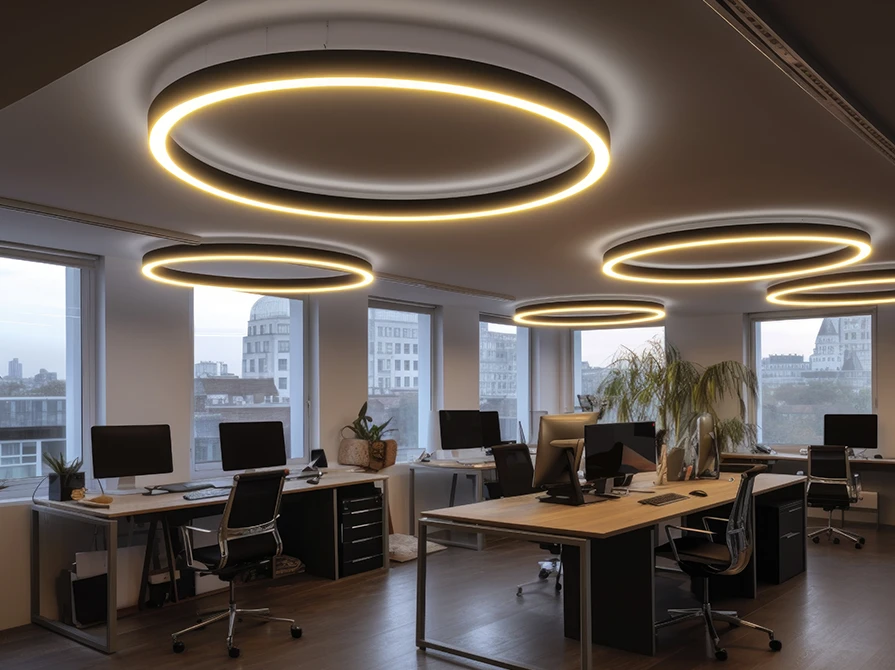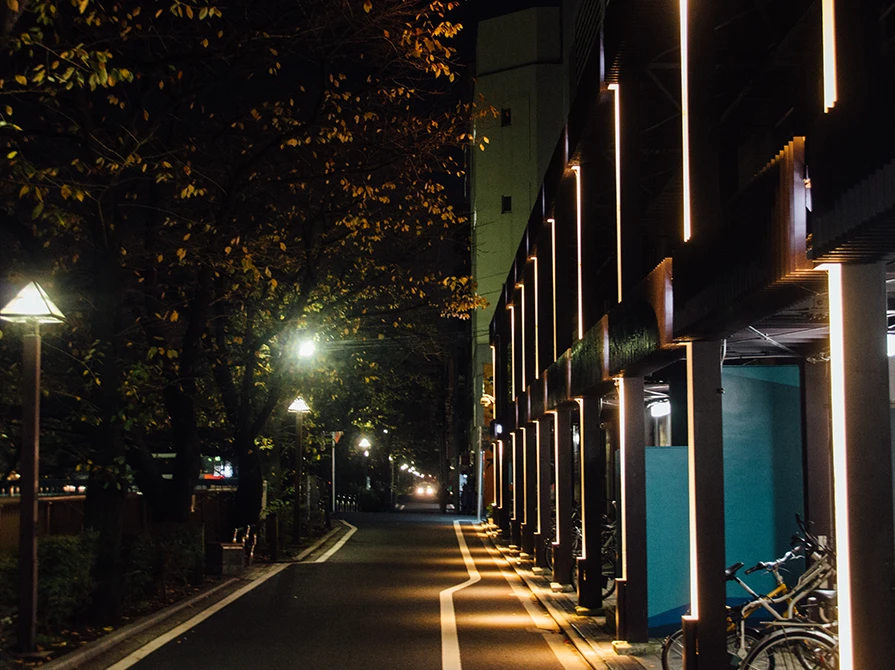Energy-Efficient Lighting Solutions for Sustainable Workplaces
In today’s rapidly evolving world, sustainability has become a cornerstone of modern business practices. One of the most impactful areas where organizations can implement sustainable practices is in their lighting solutions. Energy-efficient lighting not only reduces operational costs but also significantly diminishes the environmental footprint. This blog delves into various energy-efficient lighting solutions that can help create sustainable workplaces.
The Importance of Energy-Efficient Lighting
Energy-efficient lighting solutions are crucial for several reasons:
1. Cost Savings:
Reducing energy consumption directly translates into lower utility bills, making energy-efficient lighting a cost-effective investment for businesses.
2. Environmental Impact:
By consuming less energy, these lighting solutions reduce greenhouse gas emissions and reliance on fossil fuels, contributing to a cleaner environment.
3. Enhanced Work Environment:
Proper lighting improves employee comfort, productivity, and overall well-being, creating a better work atmosphere.
Types of Energy-Efficient Lighting Solutions
1. LED Lighting
LED (Light Emitting Diode) technology is at the forefront of energy-efficient lighting solutions. LEDs offer numerous advantages over traditional lighting sources such as incandescent and fluorescent lights.
Benefits of LED Lighting:
- Energy Efficiency: LEDs consume significantly less energy, reducing electricity usage significantly and ensuring a longer lifespan.
- Durability: LEDs are more resistant to breakage and can withstand frequent switching without affecting their performance.
- Versatility: Available in various colors and temperatures, LEDs can be tailored to specific lighting needs.
Implementation:
- Replace all traditional bulbs with LED alternatives.
- Use dimmable LED fixtures to adjust light levels according to need.
- Implement LED panels for uniform light distribution in large areas.
2. CFL Lighting
Compact Fluorescent Lamps (CFLs) are another energy-efficient alternative to traditional incandescent bulbs. While not as efficient as LEDs, CFLs still offer considerable energy savings and have a longer lifespan.
Benefits of CFL Lighting:
- Energy Savings: CFLs use significantly less energy than incandescent bulbs.
- Cost-Effective: They provide a more budget-friendly option compared to LEDs.
- Availability: CFLs are widely available and can fit most existing fixtures.
Implementation:
- Use CFLs in fixtures where LED installation might not be feasible.
- Consider using CFLs in combination with LEDs to balance cost and efficiency.
- Ensure proper disposal and recycling of CFLs due to their mercury content.
3. Natural Lighting
Harnessing natural light is one of the most sustainable lighting solutions available. Daylighting involves the strategic use of windows, skylights, and reflective surfaces to maximize the amount of natural light entering a space.
Benefits of Natural Lighting:
- Energy Reduction: Reduces the need for artificial lighting during daylight hours.
- Enhanced Well-Being: Natural light has been shown to improve mood and productivity.
- Aesthetics: Creates a more appealing and inviting work environment.
Implementation:
- Design workspaces to maximize window placement and exposure to natural light.
- Use light shelves and reflective surfaces to distribute daylight deeper into the space.
- Incorporate blinds and shades to control glare and heat gain.
4. Smart Lighting Systems
Smart lighting systems utilize advanced technology to optimize lighting efficiency. These systems can be programmed to adjust light levels based on occupancy, time of day, and available natural light.
Benefits of Smart Lighting Systems:
- Energy Optimization: Automatically adjusts lighting to reduce energy wastage.
- Convenience: Provides remote control and automation capabilities.
- Data Insights: Offers analytics on energy usage and efficiency improvements.
Implementation:
- Install occupancy sensors to turn lights on and off based on room usage.
- Use daylight sensors to adjust artificial lighting in response to natural light levels.
- Implement programmable schedules to ensure lights are used only when needed.
Best Practices for Implementing Energy-Efficient Lighting
1. Conduct an Energy Audit
An energy audit helps identify current lighting inefficiencies and areas for improvement. It provides a baseline for measuring the impact of energy-efficient lighting upgrades.
Steps to Conduct an Energy Audit:
- Evaluate existing lighting fixtures and their energy consumption.
- Identify areas with excessive or inadequate lighting.
- Assess the potential for natural lighting enhancements.
2. Choose the Right Light Fixtures
Selecting the appropriate fixtures is crucial for achieving optimal energy efficiency. Different areas of the workplace may require specific lighting types to meet their functional needs.
Considerations for Fixture Selection:
- Task Lighting: Use focused, adjustable lights for workstations and task-specific areas.
- Ambient Lighting: Ensure even, diffused lighting for general workspaces.
- Accent Lighting: Highlight specific areas or features with energy-efficient accent lights.
3. Implement Lighting Controls
Lighting controls, such as dimmers, timers, and motion sensors, play a vital role in reducing energy consumption. They provide flexibility and ensure lights are used only when necessary.
Types of Lighting Controls:
- Dimmers: Adjust light intensity to suit different tasks and times of day.
- Timers: Automatically turn lights on and off based on preset schedules.
- Motion Sensors: Detect movement to control lighting in areas with intermittent use.
4. Regular Maintenance and Upgrades
Maintaining and periodically upgrading lighting systems ensures continued efficiency and performance. Regular maintenance can also prevent issues that lead to increased energy consumption.
Maintenance Tips:
- Clean light fixtures and replace bulbs regularly.
- Check for and repair any damaged wiring or fixtures.
- Upgrade outdated lighting systems with more efficient options.
Conclusion: Lighting the Way to Sustainability
Energy-efficient lighting solutions are a vital component of sustainable workplace design. By adopting technologies like LEDs, CFLs, smart lighting systems, and maximizing natural light, businesses can achieve substantial energy savings, enhance employee well-being, and contribute to a healthier environment. Conducting energy audits, selecting appropriate fixtures, implementing lighting controls, and maintaining systems regularly will ensure ongoing efficiency and sustainability. For more information on energy-efficient lighting solutions for sustainable workplaces, please feel free to get in touch with us.


